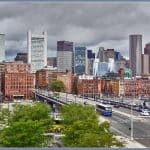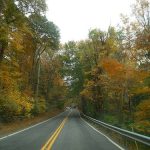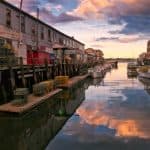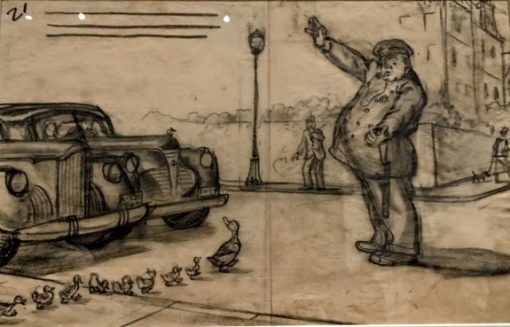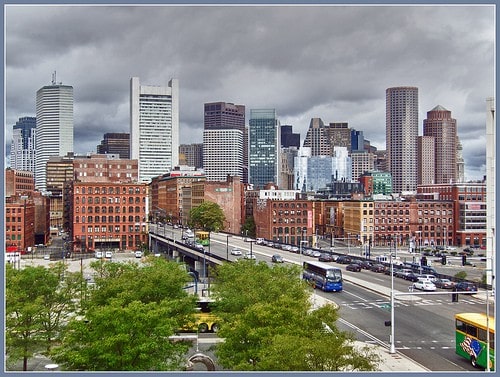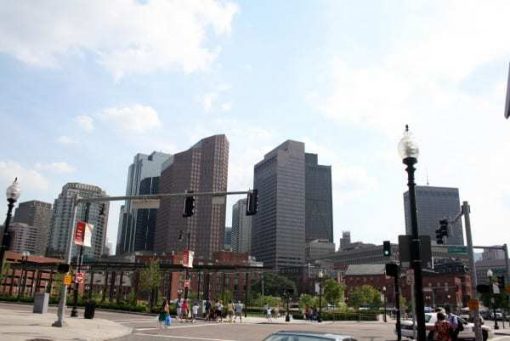Paul Revere House is a historic wooden house in Boston’s North End that dates back to the colonial era. The house was built in 1680 and served as a home for Paul Revere and his wife, five children, and mother during the American Revolution. This home was the starting point of his infamous ride to alert the colonies that the Red Coats were coming. There’s all sorts of history to soak up in Boston’s North End, so consider this a great starting point.
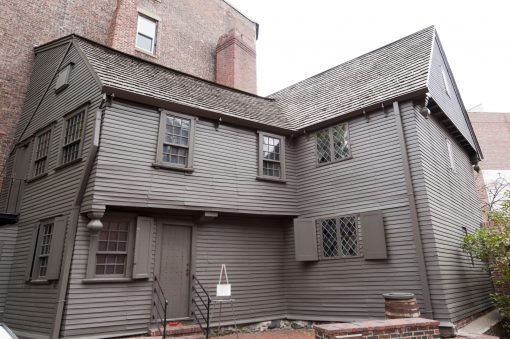
Paul Revere’s home stands as the oldest building in downtown Boston, Massachusetts, and serves as a not-for-profit museum. In 1908, the Paul Revere House was opened as one of the first historic house museums in the USA. The three-story house is one of the few houses that have survived since the colonial era and was designated a National Historic Landmark in 1961. The Paul Revere Memorial Association runs the museum and charges an admission fee.
The historic house was first owned by Robert Howard, an affluent slave trader. He constructed the townhouse in the conventional Massachusetts style of the day using timber that featured strong framing and aerial crossbars. Double casement windows, a massive fireplace, and the lack of indoor hallways are hallmarks of architecture during the colonial era.
The house belonged to Paul Revere between 1770-1800. He renovated the house by setting up a chimney in the rear while staying before selling it in 1800.
Some of the structures of the house from the original 1670 include sections of the floor, three windows, two doors, the foundation, the inner wall, and raftering. All the initial glass in the original structure is gone. Part of the furniture upstairs is thought to have been what the Rever family used when living in the house.
In the middle of the eighteenth century, there were two major renovations to the building. First, the street-facing roofline was adjusted upwards to conform to the then predominant Georgian architectural style. Second, the renovations involved adding a two-story lean-to in the ell between the two sections of the original house. The building has largely retained its authentic structures at about 90% despite the various renovations over time.
When Revere sold the house, it was rented it out for several commercial enterprises, including shops housed on the ground floor – a grocery, bank, and a candy store. In 1902, John P. Reynolds, Revere’s great-grandchild, bought the house, returning ownership to the Revere family. When it came to Boston houses for sale, this was obviously not a typical purchase.
The Paul Revere Memorial Association enlarged the historic house in 2016 to add a 3,500 square foot education center. It is accessed by a footpath and serves as an expansive exhibition about Revere’s life as an industrial working during the American Revolution, his work as a silversmith, and his famous midnight ride. The education center is wheelchair accessible and includes a library and classroom.
The Paul Revere House is a popular stop for Boston visitors as well as for student visits. It’s one of several family-friendly activities in Boston, and you should expect long lines during school breaks and summer. Once inside, It will take approximately thirty minutes to walk through the house, although time in the education center will depend on personal interest in the era.
Address: 19 North Square. The Paul Revere House is on the Freedom Trail, a two-and-a-half-mile red-brick walking trail that leads you to 16 historic sites. The Paul Revere House is on the trail between Faneuil Hall and the Old North Church. Website here. You reach the Paul Revere House via the T (Boston’s metro system). Take the green line to Government Center or Haymarket, or the blue line to Government Center or Aquarium, or the Orange line to State or Haymarket.
Hours: Open from Wednesday through Sunday from 10 am to 4:30 pm. Safety protocols are in effect. Reduced winter hours.
Admission: $6 adults; $5.50 seniors and college students; and $1 children (ages 5-17). There’s an option to pay by cash, credit card (minimum $10), or Paypal mobile app.
You might also enjoy
Mary Jo Manzanares is a founder and the editor-in-chief of The Traveler’s Way, an online travel magazine proving informational and inspirational travel recommendations for curious Baby Boomer travelers. She has been a speaker at various industry events and has a personal travel blog at Traveling with MJ. When she’s not traveling, Mary Jo likes lingering over a cup of coffee, wandering in a museum, sipping wine at a cafe, and sharing it all with friends and readers. Mary Jo’s top travel destinations are Italy, Portugal, and the Caribbean.
